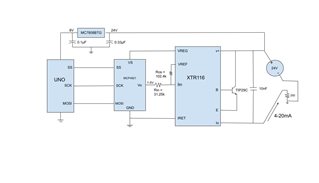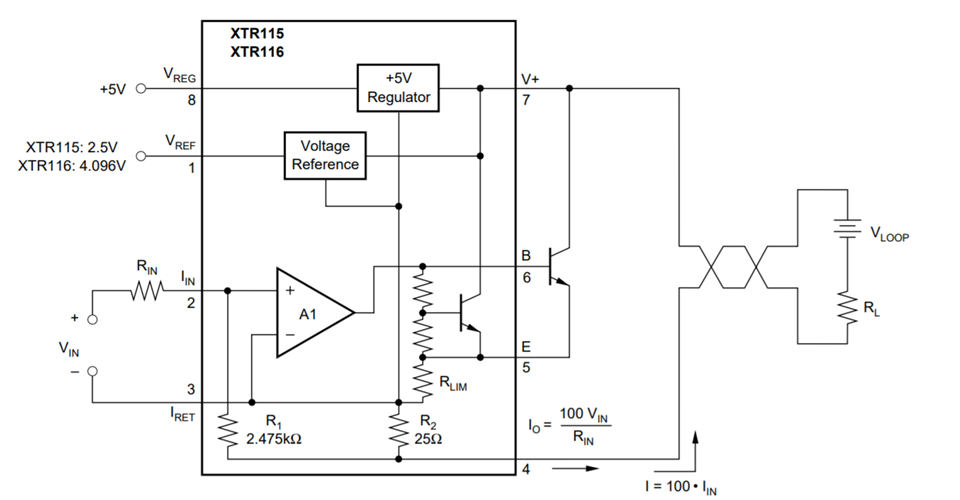Other Parts Discussed in Thread: XTR115, XTR111
Hello!
I made the silly mistake of ordering a XTR116 without properly reading the datasheet and now i have no external transistor which i definitely need.
Im struggling to understand the role of the resistor between Vref and Iin and in understanding if any other components are required.
The project that i am working on uses an Arduino to send sine wave values over SPI to a DAC (MCP4921) which will then output values 1V-5V.
I would like to use this to generate the 4-20mA current loop.
I understand i can do this using an op amp and resistor but ive already done that and would now like to try out the XTR116.
I have a feeling the dac is unnecessary in this new circuit but im not 100% so i would appreciate any advice.
Thanks!





